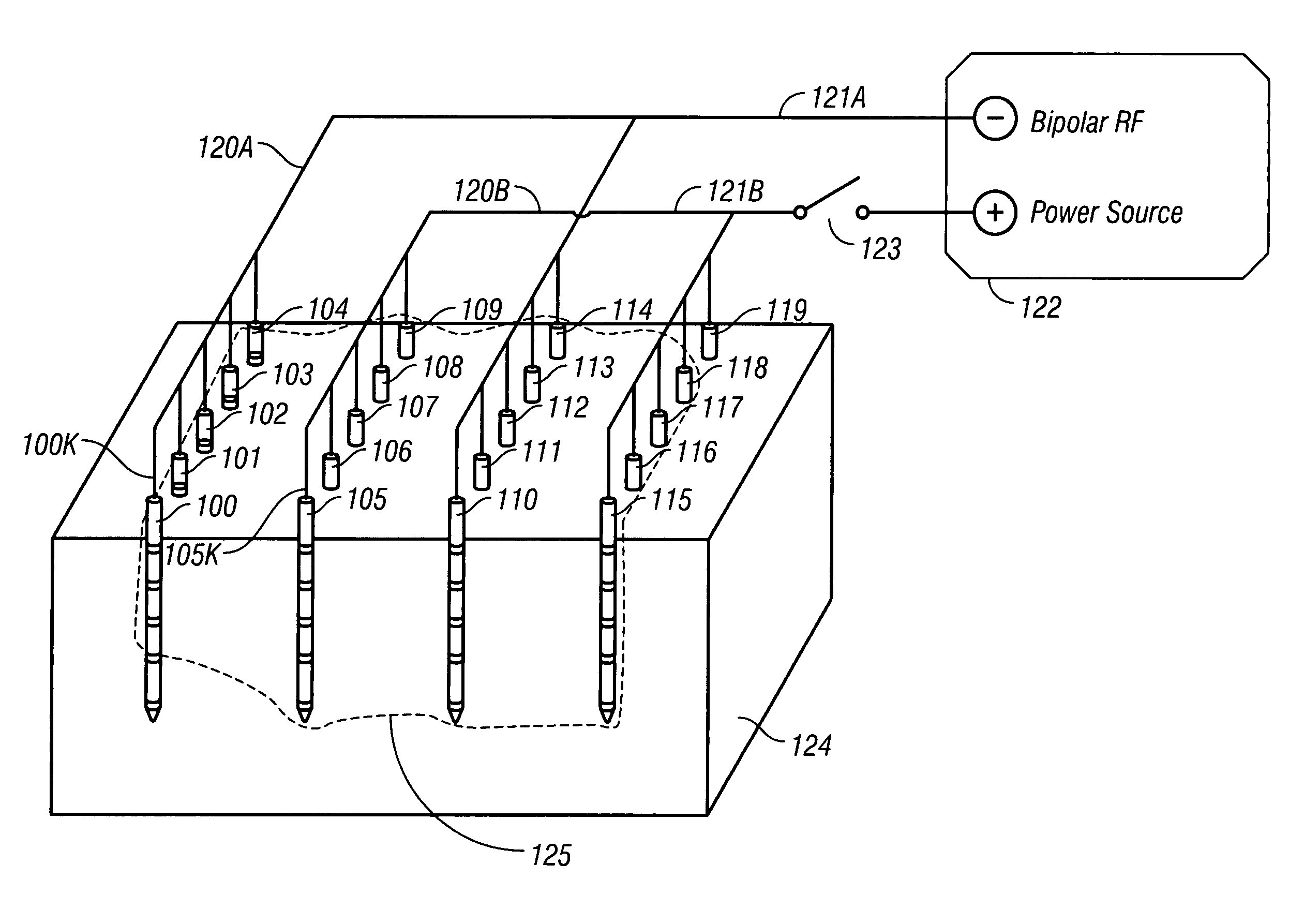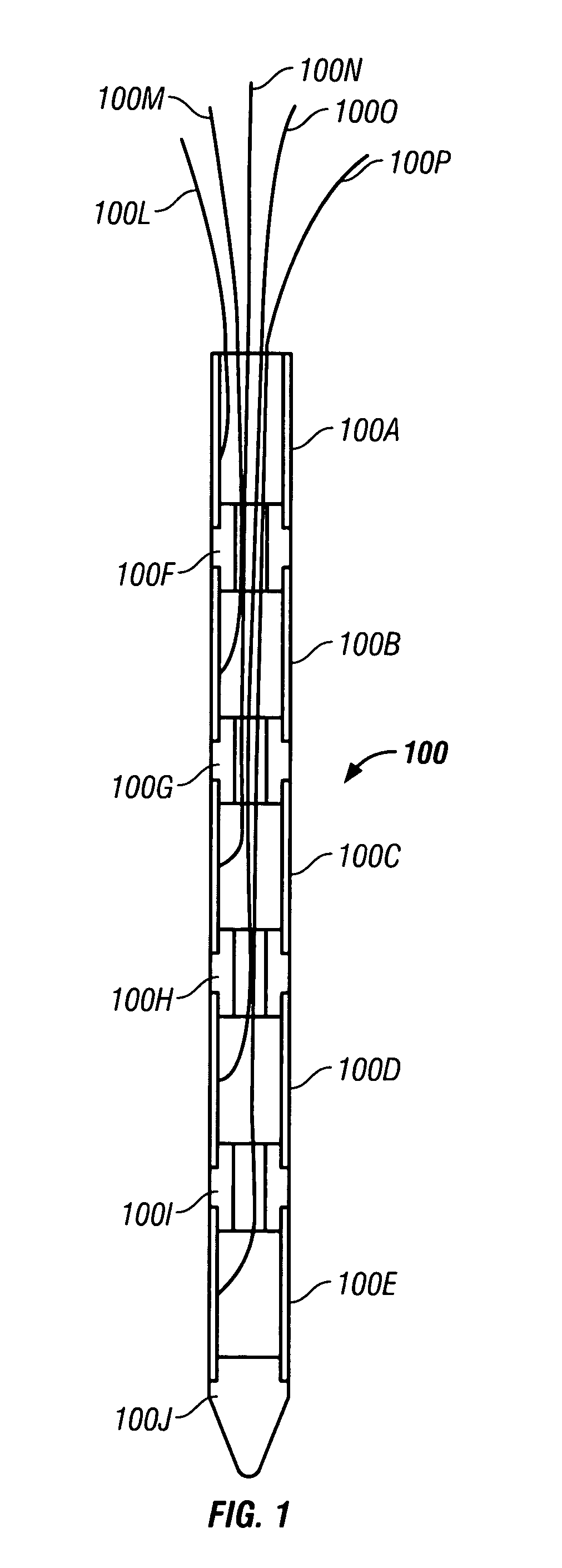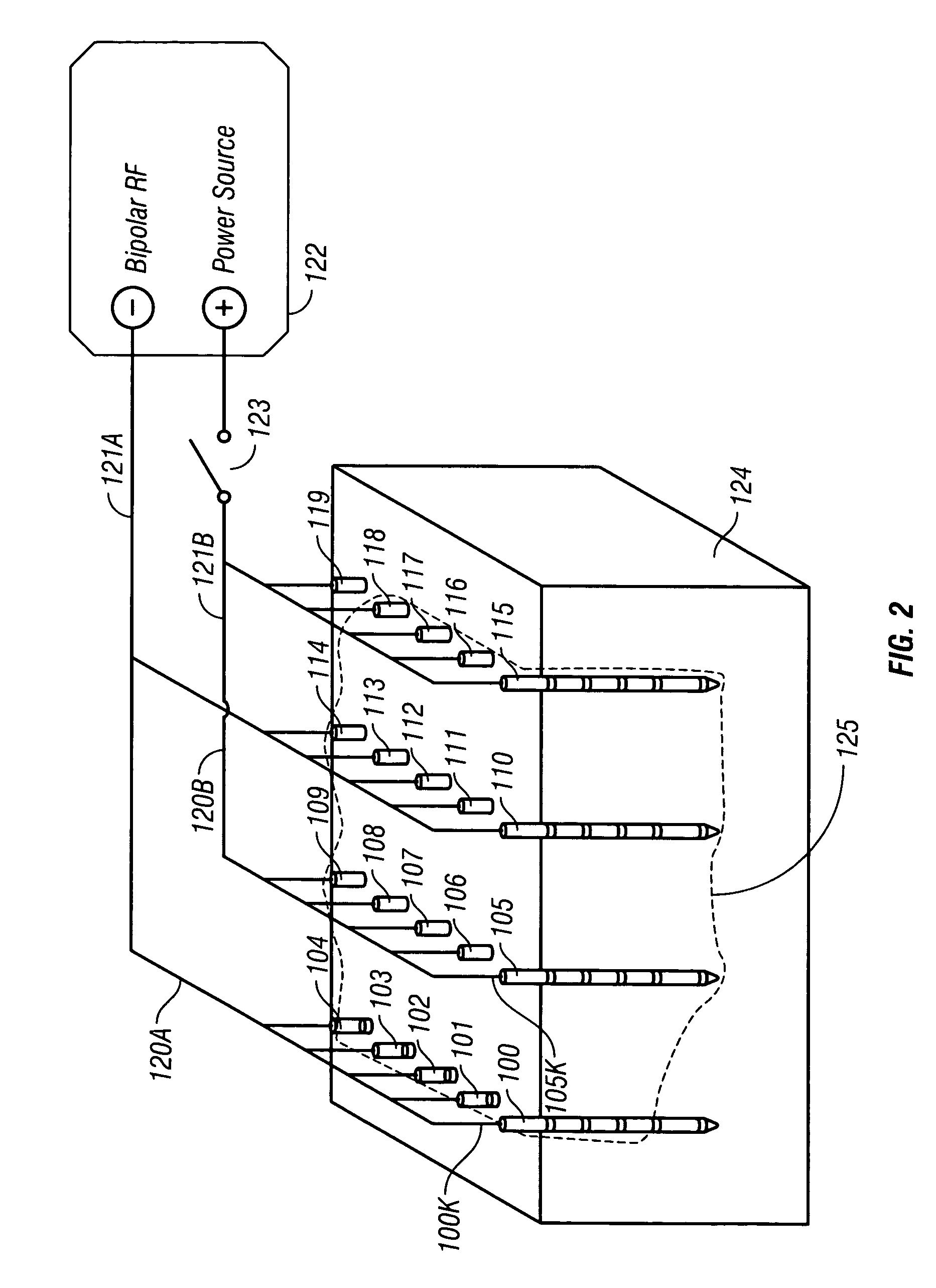Device and method for tissue ablation using bipolar radio-frequency current
a radiofrequency current and tissue ablation technology, applied in the field of medical devices, can solve the problems of uncontrollable depth of ablation, unplanned damage, and device cannot be used to achieve desirable three-dimensional large lesions consistently, so as to improve the ability to configure the lesion and improve the tissue ablation method
- Summary
- Abstract
- Description
- Claims
- Application Information
AI Technical Summary
Benefits of technology
Problems solved by technology
Method used
Image
Examples
Embodiment Construction
[0023]FIGS. 1 and 2 illustrate schematically the configuration and the electrical connection of the improved ablation device. It generally contains a plurality of needle electrodes 100 through 119, arranged in a matrix configuration. The needle electrodes 100 further contains a plurality of electrically conductive metal segments 100A, 100B, 100C, 100D, and 100E, which are jointed by non-conductive tube joints 100F, 100G, 100H, and 100I. A pointing needle tip 100J is assembled at the distal end of the needle electrode 100 to allow for easy penetration into tissues. While the needle tips and metal segments may be made of any of the well known metals such as stainless steel, copper alloys, they may be made of any type of electrically conductive materials.
[0024]The metal segments 100A, 100B, 100C, 100D, and 100E are individually wired with a terminal wire bundle look containing five individual wires 100L through 100P, which are individually connected to branch wire bundle 120A, power ca...
PUM
 Login to View More
Login to View More Abstract
Description
Claims
Application Information
 Login to View More
Login to View More - R&D
- Intellectual Property
- Life Sciences
- Materials
- Tech Scout
- Unparalleled Data Quality
- Higher Quality Content
- 60% Fewer Hallucinations
Browse by: Latest US Patents, China's latest patents, Technical Efficacy Thesaurus, Application Domain, Technology Topic, Popular Technical Reports.
© 2025 PatSnap. All rights reserved.Legal|Privacy policy|Modern Slavery Act Transparency Statement|Sitemap|About US| Contact US: help@patsnap.com



